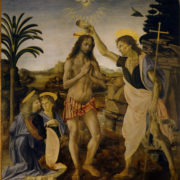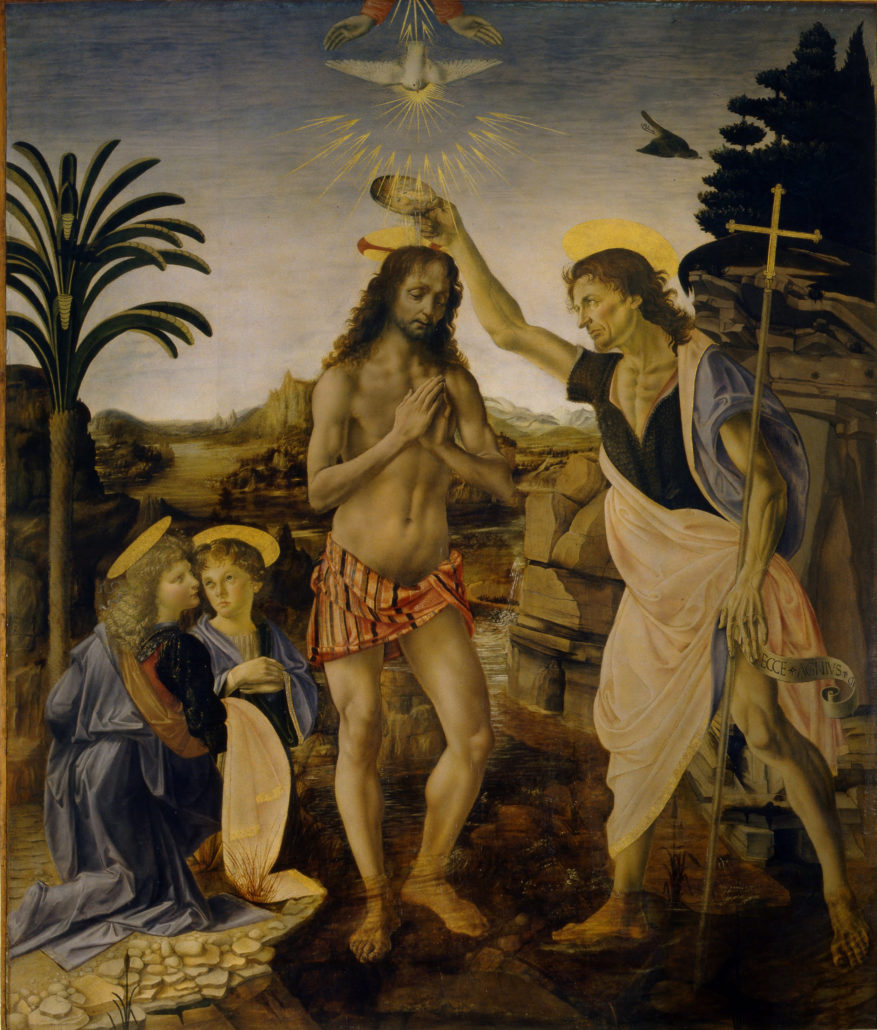Jaguar Sponsors Promotional Restoration of Raphael’s “Deposition”
Raphael’s Deposition in the Borghese Gallery, a masterpiece from his pre-Roman phase, has recently undergone a vigorous cleaning at the hands of restorer Paola Tollo Dickmann (after the original chief restorer, Laura Ferretti, resigned citing personal reasons).
Even though the work had been restored and reintegrated between 1966 and 1972, according to Kristina Herrmann Fiore, Direttore Storico dell’Arte at the Borghese, the intervention was necessitated by the detachment of the paint from the panel at the seams. In addition to addressing the issue of the adhesion of the pigment, the recent intervention also examined the efficacy of supports added to the back of the panel during the 1966-72 cleaning. Varnish, said to have been applied at that time and blamed for obscuring the colors, was also removed with an alcohol mixture, although the restorersthen applied a new coat of “protective varnish” (which it is acknowledged will yellow and have to be removed and replaced in 50-60 years).
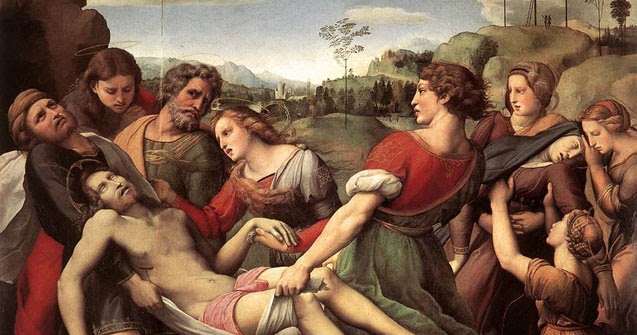
Raphael, The Deposition, 1507 (detail) Courtesy: Borghese Gallery.
Despite the proud acclamations of those involved in the restoration, there have already been several voices of dissent, and from within the restoration establishment itself. The Roman restorer Antonio Forcellino wrote a long item in the daily paper Il Manifesto on 8 May 2005, questioning the very need for the intervention and asserting, “This reconfirms how crucial and dubious the situation surrounding the care and the conservation of masterpieces is.” Other critics of the cleaning have also emerged. One is Carlo Guarienti, who was trained at the Istituto del Restauro and contributes to ;Nuances, the journal of ArtWatch’s French associate ARIPA. Another is restorer Laura Mora of the Istituto del Restauro, who worked on the Deposition during its last intervention, and who therefore has intimate knowledge about the work and its condition. Both spoke out in interviews for Il Messaggero on 14 May. Guarienti, when asked about the results of the cleaning, said bluntly, “They have ruined it. It is a disaster.” He argues that the cleaning was too severe, and rather than just removing later applications of varnish, the restorers removed Raphael’s own velatura, the translucent layers of pigment used to harmonize the underlying colors. Mora, whose name has been invoked as the teacher of Paola Tollo Dickmann, argues that the work was in perfect health, and was in no need of restoration.
The recent restoration, which also involved the Opificio delle Pietre Dure of Florence, l’Enea and the Vatican Museums, was carried out with the sponsorship of Jaguar Italia S.p.A., who put forth 40,000E for the project. The considerations of deep-pocketed sponsors, as always, seem to affect the decisions regarding which objects require interventions. As Guariento notes, private sponsors are only interested in the works of major masters, like Raphael, Botticelli, Michelangelo, and Titian, and in the end, they expect a noticeable change in the work. The result has been an epidemic of these “promotional restorations,” which for financial reasons the restoration establishment has been all too willing to carry out. Raphael’s broad appeal has made him a favored artist for this practice, presumably for his public relations value in the eyes of marketing experts who advise companies like Jaguar and Estee Lauder, the latter of which in recent years sponsored the restoration of Raphael’s ;La Fornarina and the diagnostics (i.e. pre-restoration) of his La Bella.
For Jaguar, the sponsorship fits into its thematic Year of Culture, during which they’ve sponsored various events, as well as an exhibition in Naples’ Museo di Capodimonte, Caravaggio, l’ultimo tempo 1606-1610. Jaguar has related its passion for masterworks to their interest in technology and the design of their automobiles. In sponsoring the restoration, the company has expressed its desire to leave permanent evidence of their involvement, which they term the “Jaguar Difference.”
The museum, too, appears to have had one exceptional motive — besides the well-being of the painting — for carrying out the restoration. Even at the time of the 15 March 2004 announcement, there was already a plan for a blockbuster exhibition at the Borghese Gallery, now set for the Spring of 2006 and entitled Raffaello a Roma. 1507. The newly restored work, which was executed in 1507 for Raphael’s Perugian patron Atalanta Baglioni, will be its star attraction. Undoubtedly there is an interest in capitalizing on the success of the recent Raphael show at the National Gallery in London, which rode on the coattails of the media buzz surrounding the purchase of the Madonna of the Pinks, and to which the Borghese lent their recently restored ;Lady with a Unicorn. And the show will be a blockbuster indeed, as it will be the first major exhibition on the artist in Rome, for which they fully expect international cooperation.
Despite the protests of several restorers, the press is largely celebrating the results of the cleaning, championing Raphael as a great master of color and writing of “Un’esplosione di colori freschi e cangianti”, recalling the spectre of the Sistina restoration. Yet with the underlying thought of a major exhibition looming, one cannot help but be skeptical that, as Forcellino stated, the urgent conservational need regarding this painting may have been overstated. Perhaps the desire to establish Raphael as a brilliant young colorist at the end of his Florentine period (in which case the work could be compared to the similarly over-restored Doni Tondo of Michelangelo) and right before his move to Rome — where Michelangelo would display his use of bright, unmodulated hues in the Sistina (as they now appear post-restoration) — was enough to whet the appetites of the powers involved. According to the eyewitness account of an ArtWatch member in Rome, the results are highly negative, despite the promises that the cleaning would be done with “absolute delicacy and maximum prudence”.
In this case and today, more the rule than the exception, interventions are done without first establishing a consensus — or at least engaging in a debate among experts in the various fields involved — regarding the need for and the goals of such an intervention, so that there are no controls whatsoever. In fact, it has been claimed that the Istituto Centrale del Restauro was not consulted or advised even as decisions were made regarding the cleaning, and that uninvolved experts did not see the restoration while in progress. ArtWatch believes that potentially opposing voices should, for the sake of the object itself, be solicited by the superintendents and the museums, so that the aesthetic judgments or underlying motives of a small and intimately involved group of individuals do not permanently affect the oeuvres of the great masters. And just as it is both right and necessary to question these motives, we should also make the public aware of the potentially hazardous influence of corporate sponsorship, and urge them to refuse to buy products of those companies who sponsor such illicit interventions.

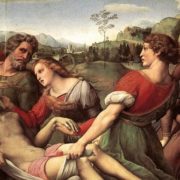
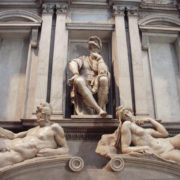
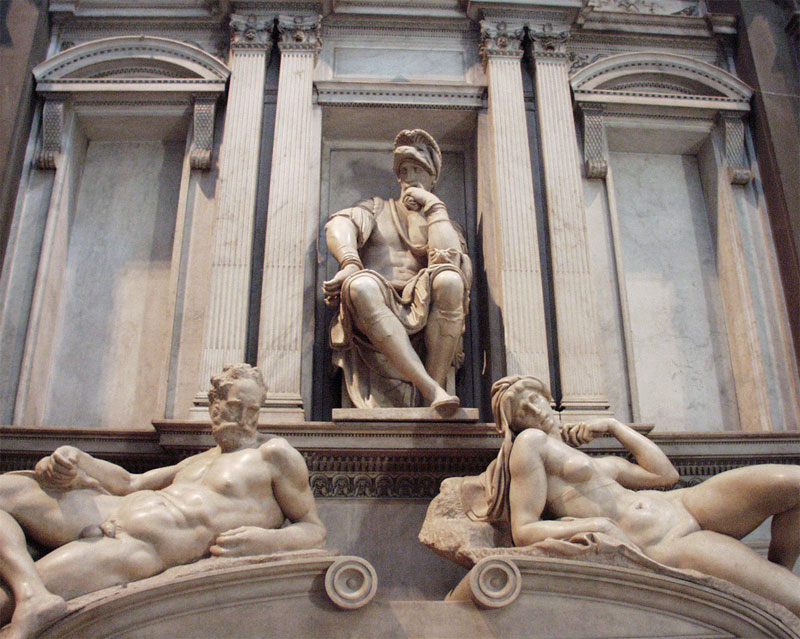 When the Superintendent of Art in Florence assigned her to treat Michelangelo’s David, an awesome project on every level, those who might have wished that the Gigante be left alone were satisfied that there would be no danger to the integrity of the statue posed by Agnese Parronchi. It would be the crowning jewel of her life’s work, which would give her the kind of world recognition she had earned. When the Florentine officials wanted to impose upon her a very vigorous treatment which included the use of solvents, she did the impossible. She resigned, refusing to carrying out a cleaning which she considered too severe.
When the Superintendent of Art in Florence assigned her to treat Michelangelo’s David, an awesome project on every level, those who might have wished that the Gigante be left alone were satisfied that there would be no danger to the integrity of the statue posed by Agnese Parronchi. It would be the crowning jewel of her life’s work, which would give her the kind of world recognition she had earned. When the Florentine officials wanted to impose upon her a very vigorous treatment which included the use of solvents, she did the impossible. She resigned, refusing to carrying out a cleaning which she considered too severe.
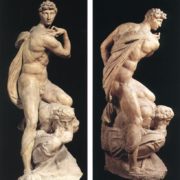
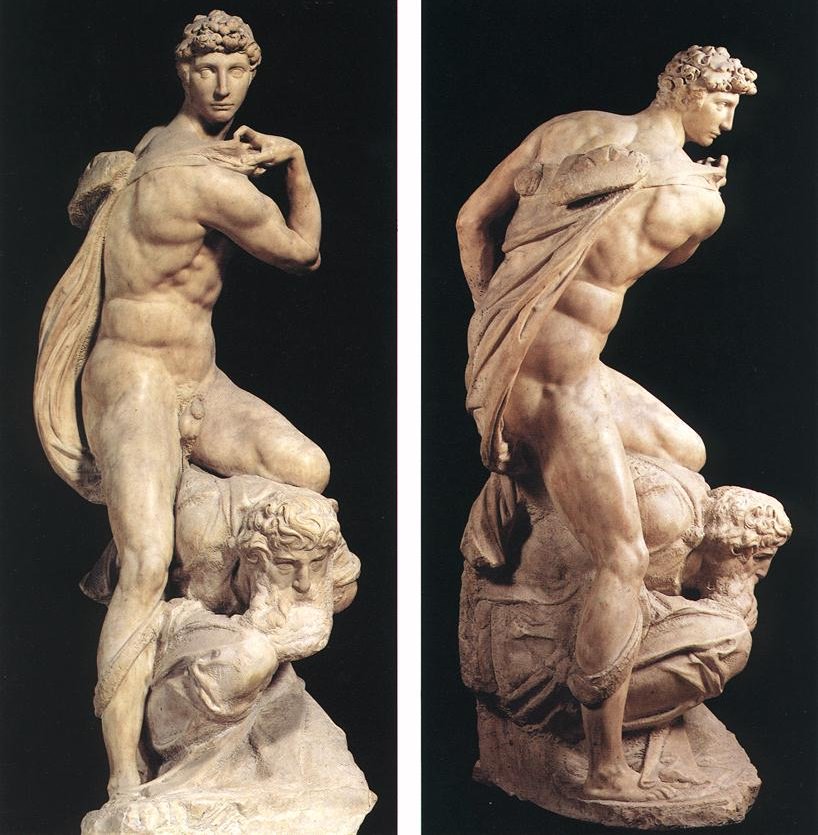 In an open letter to the Mayor of Florence, ArtWatch is calling for an immediate halt to the restoration of Michelangelo’s statue group known as “Victory”.
In an open letter to the Mayor of Florence, ArtWatch is calling for an immediate halt to the restoration of Michelangelo’s statue group known as “Victory”.